Feature Article INDIA: The Rise of a New Economic Superpower 1

Areas with high growth potential extend beyond IT to include manufacturing, agriculture, and other sectors, with economic growth still in its initial stages.

The Modi government’s key policy has shifted from “Make in India” to “Self-reliant India,” and while focusing on strategic sectors, its eagerness to attract foreign investment remains unchanged.

Business potential exists in all parts of the country, making it essential to understand the characteristics of each region and develop business accordingly based on Indian-style management. JBIC is also expanding its efforts here.

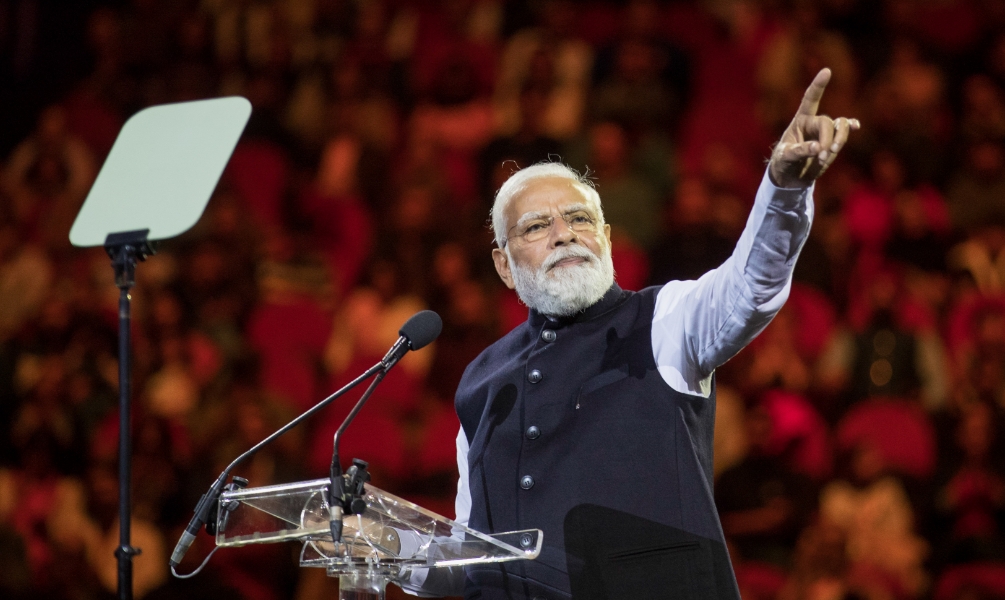
Prime Minister Modi has been driving India’s economic growth since he took office in 2014. Photo: Bloomberg/Getty Images
V-shaped recovery from the pandemic, healthy IT and strong public investment
“These four years have been quite the roller coaster,” reflects KURIHARA Toshihiko, Chief Representative of the Japan Bank for International Cooperation (JBIC) Representative Office in New Delhi. He took up his current position in July 2019, and just as he was getting settled in, COVID-19 swept the world.
“India went into a strict lockdown, almost like martial law. We were not allowed to go outside at all, not even to take a walk.” But now that the pandemic is under control, it appears that India is flourishing. KURIHARA says that he had never visited India or had any particular attachment to the country before taking up his post. That’s precisely why he can approach the reality of India’s rise and carry out his work on the ground unhindered by existing images or preconceptions of the country.

KURIHARA Toshihiko, Chief Representative, JBIC Representative Office in New Delhi, being interviewed during a short return to Japan.
Although India’s economy contracted by 6.6% in 2020 when the pandemic began, it made a V-shaped recovery the following year with 8.7% growth. In 2022, growth was 6.7%. India’s nominal GDP is some USD 3.38 trillion, surpassing that of the U.K., and reaching nearly 80% of Japan’s. “The Indian government’s policy is to stabilize the growth rate at 6-7% over the next 10 years or so,” says KURIHARA.
What is astonishing is that such levels of growth projections are just the beginning. India will become the world’s most populous country when it overtakes China this year. China’s population has been declining since 2022, but India’s is expected to continue growing until the 2060s. Moreover, as it is estimated that about 1 billion people, more than two-thirds of the total population, are still living in rural areas, there is huge potential for domestic demand to expand.
When viewing the industrial structure, agriculture accounts for about 15% of GDP, but people employed in agriculture make up some 40% of the labor force. This means there is more than enough capacity to shift labor to the manufacturing industry, which is expected to contribute to future economic growth, as well as to other highly productive service sectors such as finance, real estate, and logistics. “Ownership of cars and consumer electronics has not yet penetrated rural areas, signifying that there is still much room for growth in economic and financial inclusion.”

Public investment in infrastructure, which is showing a strong recovery, is also supporting India’s remarkable progress. “In India, even basic infrastructure is not yet fully in place. The construction rush is continuing at a staggering pace, and the government budget for infrastructure investment is increasing at a rate of about 30% annually.” Economic growth continuing at high levels and stable tax revenues from progress made in digitalization of government are supporting this aggressive investment.
“For a developing country, India has a reputation for its robust monetary policy. Backed by hefty foreign-exchange reserves, the Indian rupee’s fluctuations against the dollar, yen, and other key currencies are surprisingly low, and few Western investors fear ‘rupee risk.’ Despite soaring resource prices, the inflation rate is also well within the economic growth rate range.”
The IT industry, which has been a major driver of India’s economy, remains strong. In May 2023, Amazon announced that it would invest INR 1.56 trillion (USD 19 billion) through 2030 in building large-scale data centers and other cloud-related infrastructure. This is projected to create hundreds of thousands of jobs a year in sectors including construction, equipment maintenance, and telecommunications.
“Regarding IT, India has the very clear advantage of being the second largest English-speaking country in the world. In addition, behind India’s development as an outsourcing destination was its national policy of fostering STEM (science, technology, engineering, and mathematics) talent and so it has a pool of human resources that can meet the standards demanded.”

PM Modi’s leadership and attraction of foreign investment. The true aim of “Self-reliant India”
The leadership of Prime Minister Modi, who took office in 2014, cannot be overlooked when speaking about India’s rapid progress. One of his first initiatives was “Make in India,” a national policy to promote and strengthen the domestic manufacturing industry by attracting investment from around the world.
KURIHARA says, “It was a very easy-to-understand theme and was fairly effective in announcing India’s intentions,” but, he points out, “It was not able to establish a strong Indian manufacturing sector.”
In 2020, the Modi-led government, then entering its second term, announced “Self-reliant India,” an updated version of “Make in India.” A major national strategy that goes beyond economic and investment policies to incorporate the concept of economic security, “this policy focuses on and gives priority to strengthening strategic areas that will contribute to a self-reliant India,” says KURIHARA.
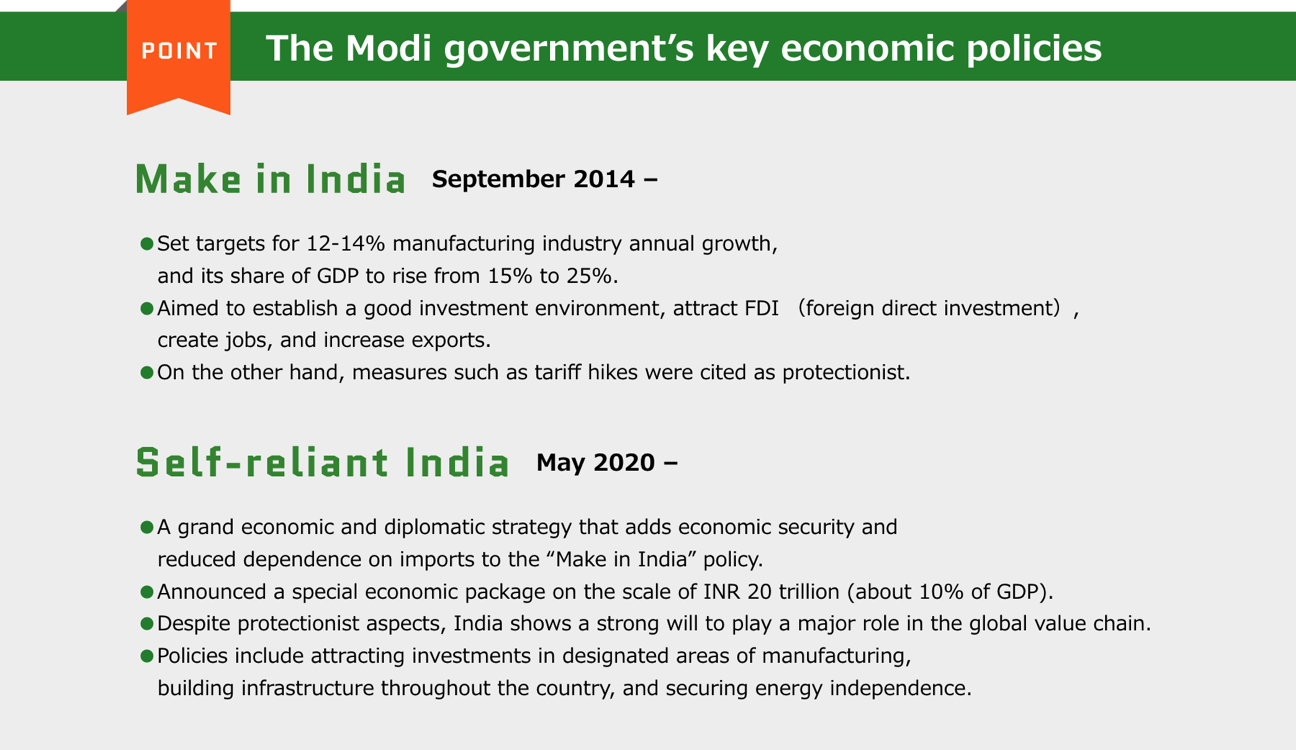
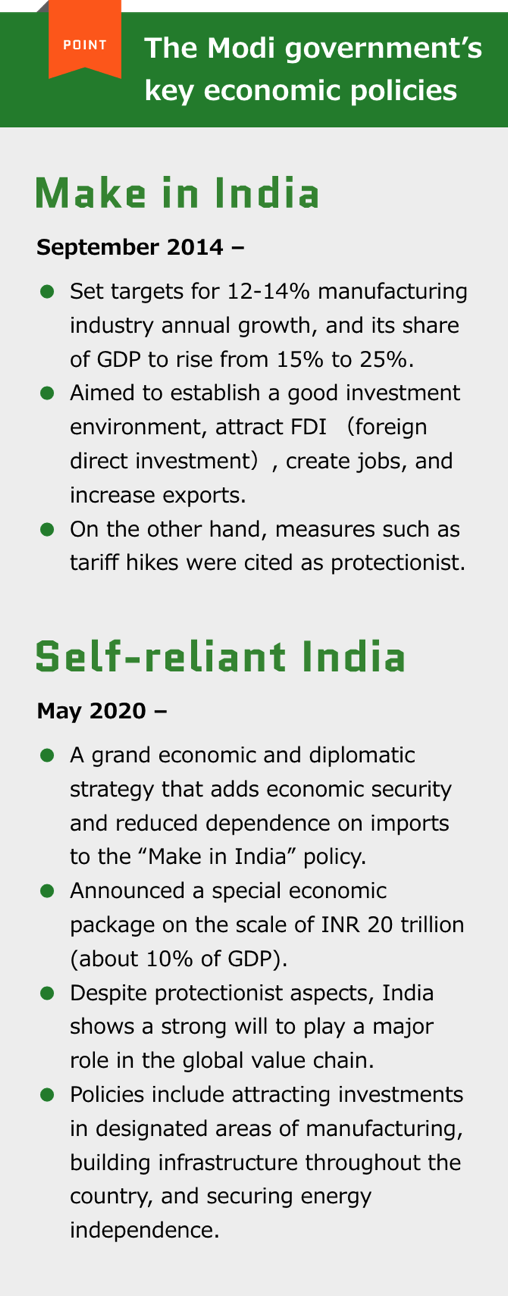
For example, in the energy sector, India is almost 100% dependent on imports of oil, coal, and other resources. So, this strategic approach calls for a switch from these to natural gas, for which India is only about 50% dependent on imports, and renewable energy. In addition, regarding renewables, as India also relies on imports for solar panels, measures to promote their domestic production are being implemented, including the provision of central government subsidies and interest-free loans from state governments.
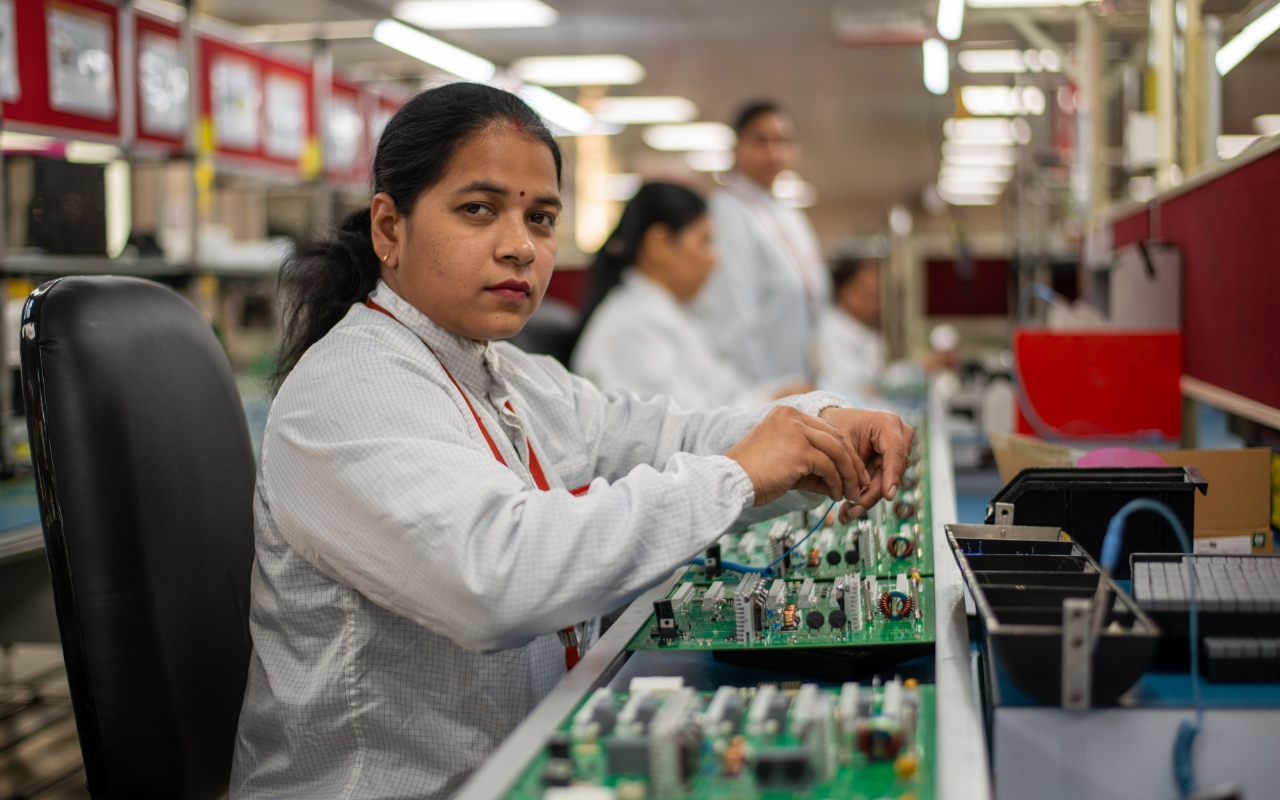
Prime Minister Modi has sent a strong message to the public and private sectors that actions not consistent with “Self-reliant India” will not be accepted. India is not alone in having government silos and approval barriers, but with clear top-down political leadership, a mood of cooperation and breaking with old habits is developing among ministries and agencies.
At first glance, these measures can seem protectionist. “It is true that this can be viewed as restricting foreign investment and free trade. That’s where the government is very smart, however. It has been managing this in a balanced way by emphasizing the good sides of foreign investment and products. And what India especially wants to fix now is its dependence on one country, China.”

Trade with China had steadily increased, but a trade imbalance existed with imports greatly outweighing exports. “A trend to buy anything at lower prices from China was emerging, but since this was directly linked to the trade deficit it was considered problematic,” explains KURIHARA. Adding to this was the sudden spark of the India-China border clashes in 2020, which shifted public opinion against improving relations with China. Against such a backdrop came the “Self-reliant India” policy.
KURIHARA believes that from a geopolitical perspective as well, it was inevitable for India to reduce its economic dependence on China and strongly encourage a broad range of sectors to set up manufacturing centers in the country.
“India is showing its strong ambitions to replace China as the factory of the world. There is also an emerging trend among Western countries to shift their global supply chains to India, and so to seize this opportunity as well, India thought it best to distance itself from China. Working to attract foreign investment from countries other than China is being consistently promoted under the Modi government.”
Japan-India relations have also grown stronger. Amid the growing strategic importance of India, the results of a 2022 JBIC survey conducted of Japanese companies showed India topping China as the most promising country for business development over the next three years. Momentum is building for Japanese companies to set up business in India.
“The Japan Chamber of Commerce and Industry in India has about 500 member companies, but we can sense this momentum with new membership increasing at an unprecedented speed—as many as five to ten companies a month.”
Develop strategy for investment in India by understanding regional characteristics
So, what points should Japanese companies pay particular attention to when considering business expansion to India? “India is a huge country, so it will be easier if we divide the country into the four regions of north, south, east, and west, and look at their regional characteristics,” explains KURIHARA.
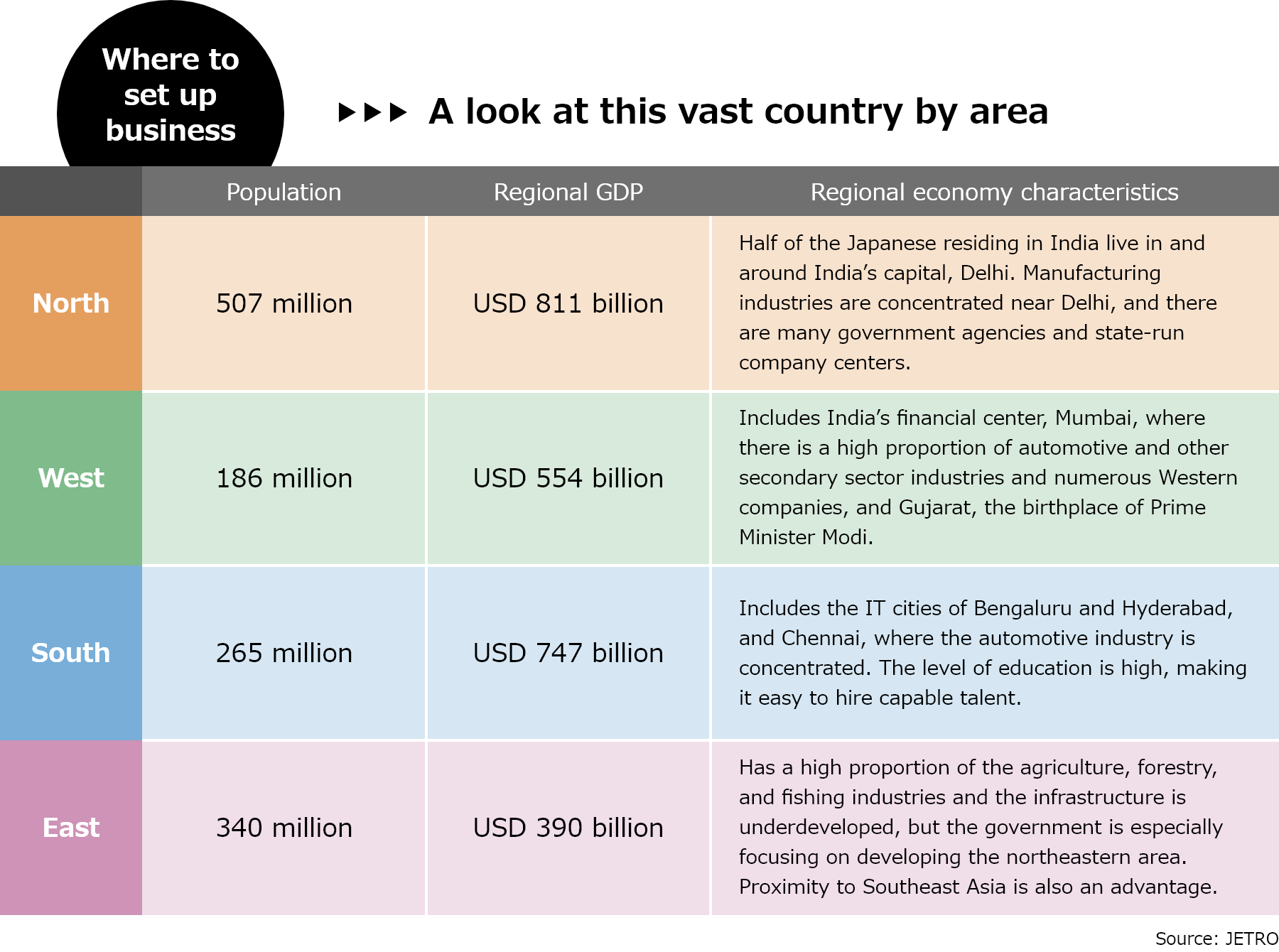
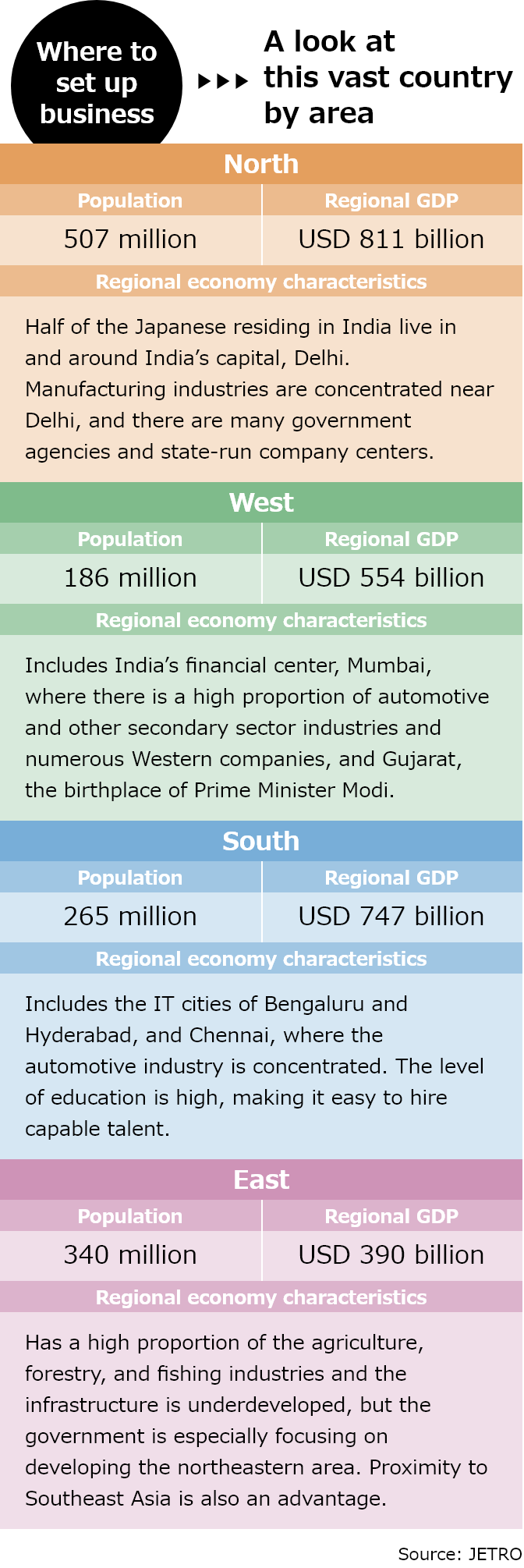
“There are about 10000 Japanese people in India, with about half of them living in the capital Delhi, and its surroundings. Naturally, this is the top location for Japanese companies entering the Indian market. It is the political center and also functions as a hub connecting to all areas of the country, so the conventional way to enter the Indian market is from northern India.”
Then, looking south, there are the IT city of Bengaluru, and Chennai, center of the automobile industry. Southern India is an area that focuses on manufacturing in addition to IT. “The level of education is high here, so it has the advantage of allowing companies to hire excellent talent at a lower cost than in the north. If another location is needed, southern India is a good candidate.”
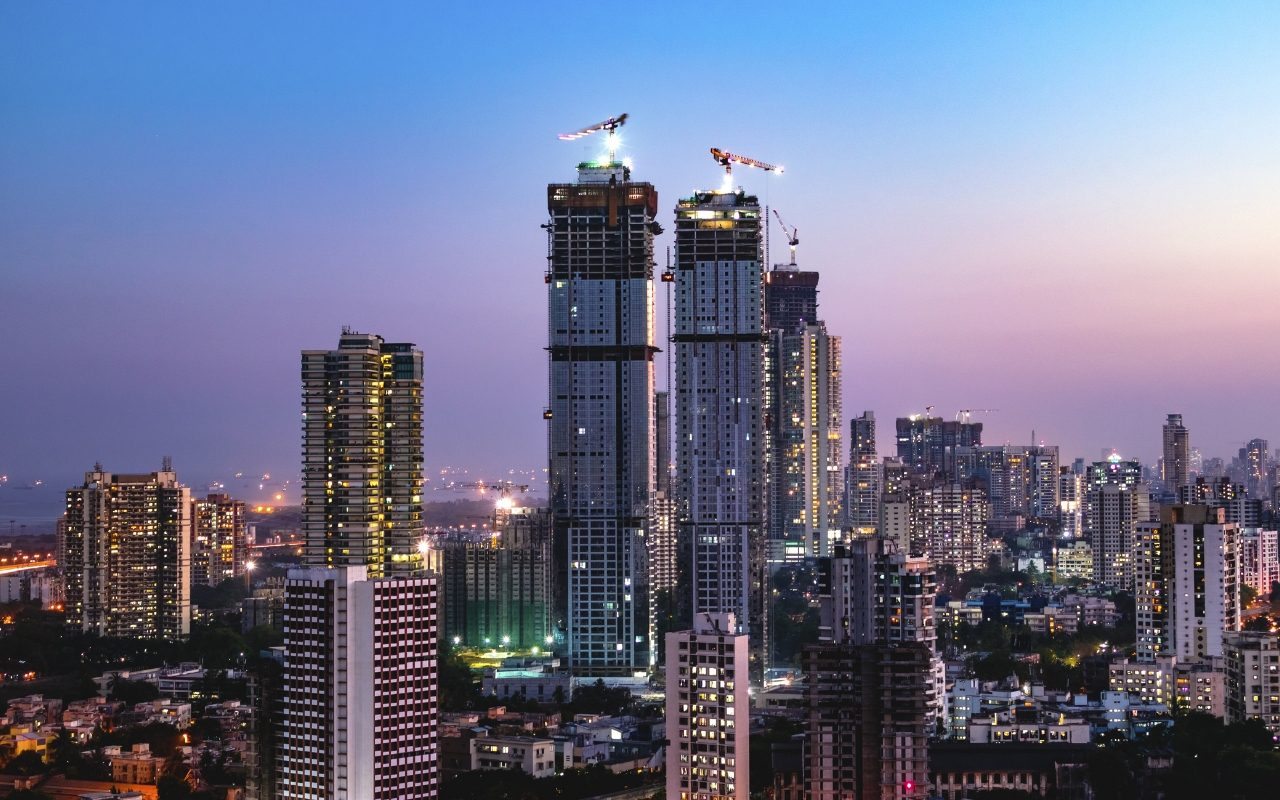
Western India has Mumbai, India’s financial and economic center, home to numerous conglomerates. The state of Maharashtra alone, where Mumbai is located, has a population of over 120 million, but there are only 500 Japanese residents. “Eastern India, which is relatively underdeveloped, has even fewer Japanese. The only notable movement has been recent plans by Nippon Steel to enter the region.” However, KURIHARA believes that from the Japanese perspective, eastern India and the northeastern states might also have great potential for growth.
“Only about 4% of the population lives in northeast India, but the government has positioned it as a priority area, investing 10% of the national budget there. Japan is expected to be a partner in development projects, and since neither the West nor the conglomerates of India have focused on this region, I see potential here for first-mover advantage.”
The next key point KURIHARA raises is the existence of a federal structure of government. India is a union of states, with 28 states and 8 union territories.
“India’s state governments have more authority than prefectures in Japan. Because of this, although the central government may approve a project, it could meet setbacks due to opposition by the state government. This actually occurred when a bullet train project promoted by Japan was almost stalled by a state government in western India (the problem was resolved due to a change in the ruling coalition).” It is important to keep in mind that there are areas where the central government cannot force state governments to act.
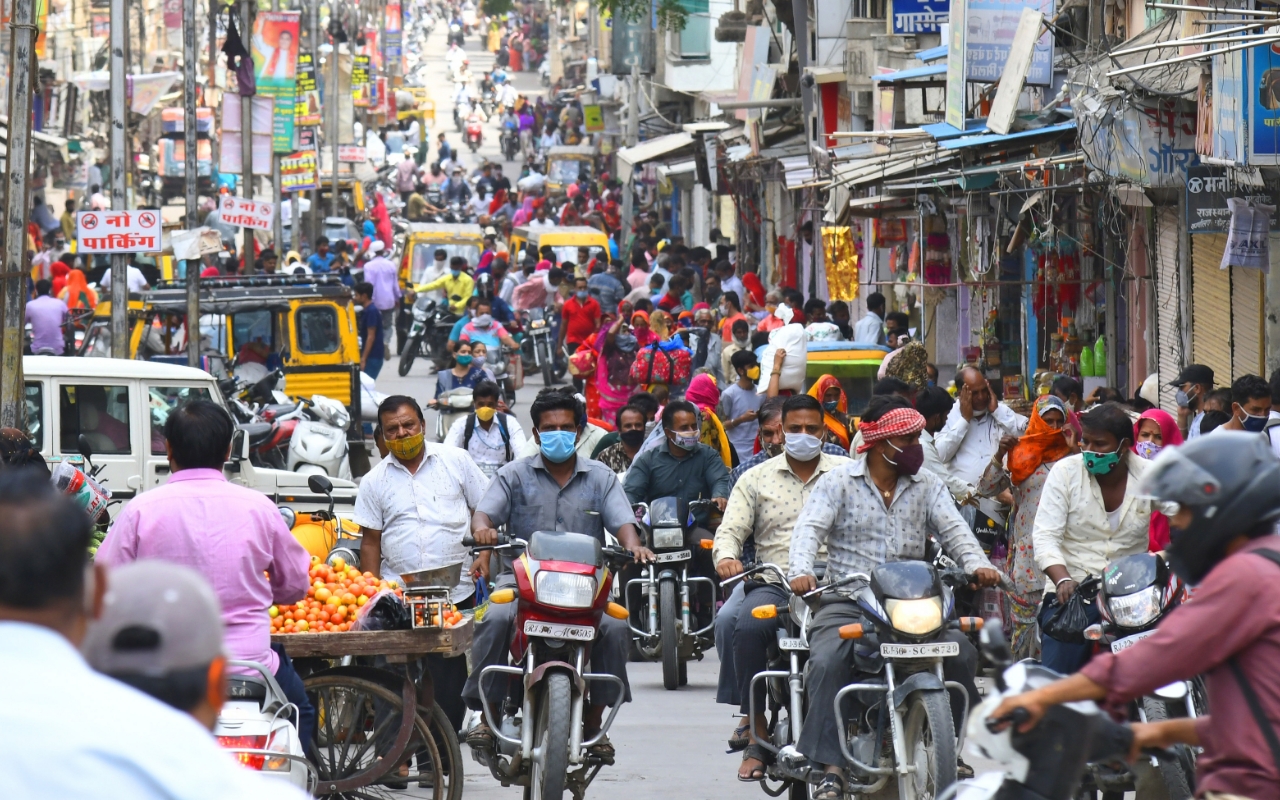
According to KURIHARA, another key point is the importance of management that respects the “Indian way.”
“Studies have shown that imposing Japanese or Western management styles is often not successful. Past experiences have also led in recent years to a majority of Western companies entrusting management to Indians with local experience, and this is also increasing among Japanese companies. A top-down management culture is mainstream in India, and personal relations with business partners are surprisingly essential. A great deal of importance is placed on how much the other party can be trusted.” To that end, KURIHARA explains that rather than sending personnel from the head office to fill the top position, it is certainly worth considering the appointment of a highly capable local individual who has deep knowledge of the local landscape, and also understands Japanese and Western management styles.
Growing expectations for JBIC, which is still currently in the learning stage
JBIC has also been rapidly expanding its efforts in recent years to promote collaboration between Japanese and Indian companies, protection of India’s environment, and economic growth utilizing its various investment and loan programs. The support provided to date has been across a diverse range of sectors and areas. This has included manufacturing industries including automotive, construction machinery, and steel, to the development of several industrial parks, including the Dholera Industrial Area in the state of Gujarat in western India, through investment in the National Industrial Corridor Development Corporation (NICDC). There have also been investments in green energy such as solar and waste to energy, and projects supporting local companies that manufacture vaccines and therapeutic drugs.
in recent years
JBIC holds a 26% share of NICDC, the National Industrial Corridor Development Corporation, which supports the development of industrial corridors throughout India. In addition to aligning with the Indian government’s measures to promote the manufacturing industry and supporting Japanese companies entering the Indian market, a current key pillar of JBIC’s operations is providing loans for green projects.
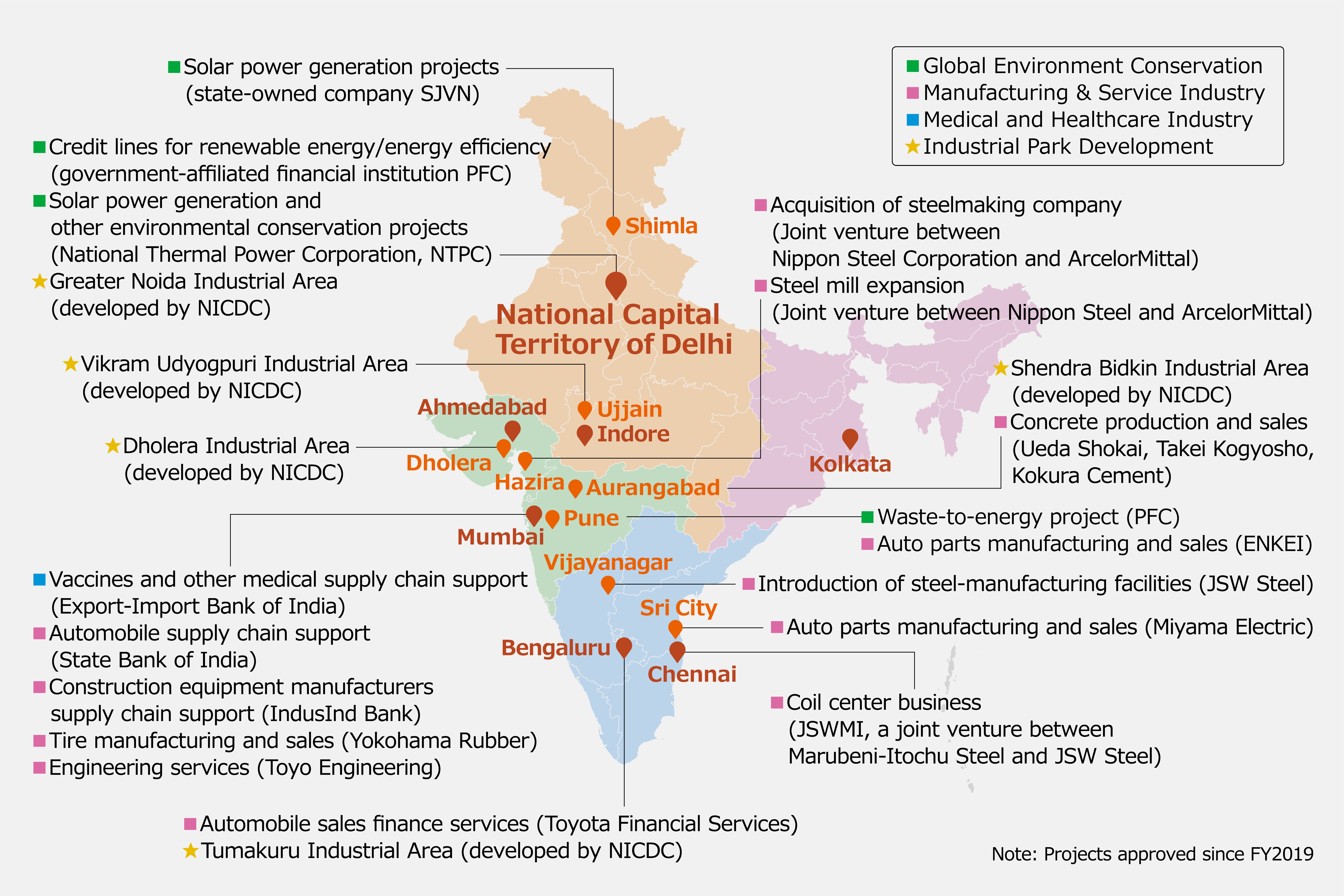
Disclaimer: This map is for illustrative purposes only and does not indicate the view of JBIC on the legal status, borders or demarcation of any country or territory or the geographic names.
The role of JBIC is expected to expand further as Japanese companies are now moving into new fields including supply chains for agricultural equipment and agrochemicals. India’s rural areas are, after all, true treasure troves of potential.
“India is a country that will continue to develop. As the ambitions of Japanese companies increase, JBIC also needs to take various initiatives to respond to their needs. In that sense, we realize that we are still in the learning stage. While constantly learning about the ‘Indian way,’ we wish to give our full attention to this country which has so much potential for growth.”


Chief Representative
JBIC Representative Office in New Delhi
KURIHARA Toshihiko
Joined JBIC in 2006 after working at a megabank. Assumed his current position in 2019 after assignments including the Mining and Metals Finance Department and Treasury Department. Also holds positions in India as Director of the Board, National Industrial Corridor Development Corporation Limited (NICDC); Visiting Fellow, Centre for Social and Economic Progress; Chair, Finance Committee, Japan Chamber of Commerce and Industry in India. Graduated from Keio University, Faculty of Business and Commerce, and received his MBA from the University of Southern California.








